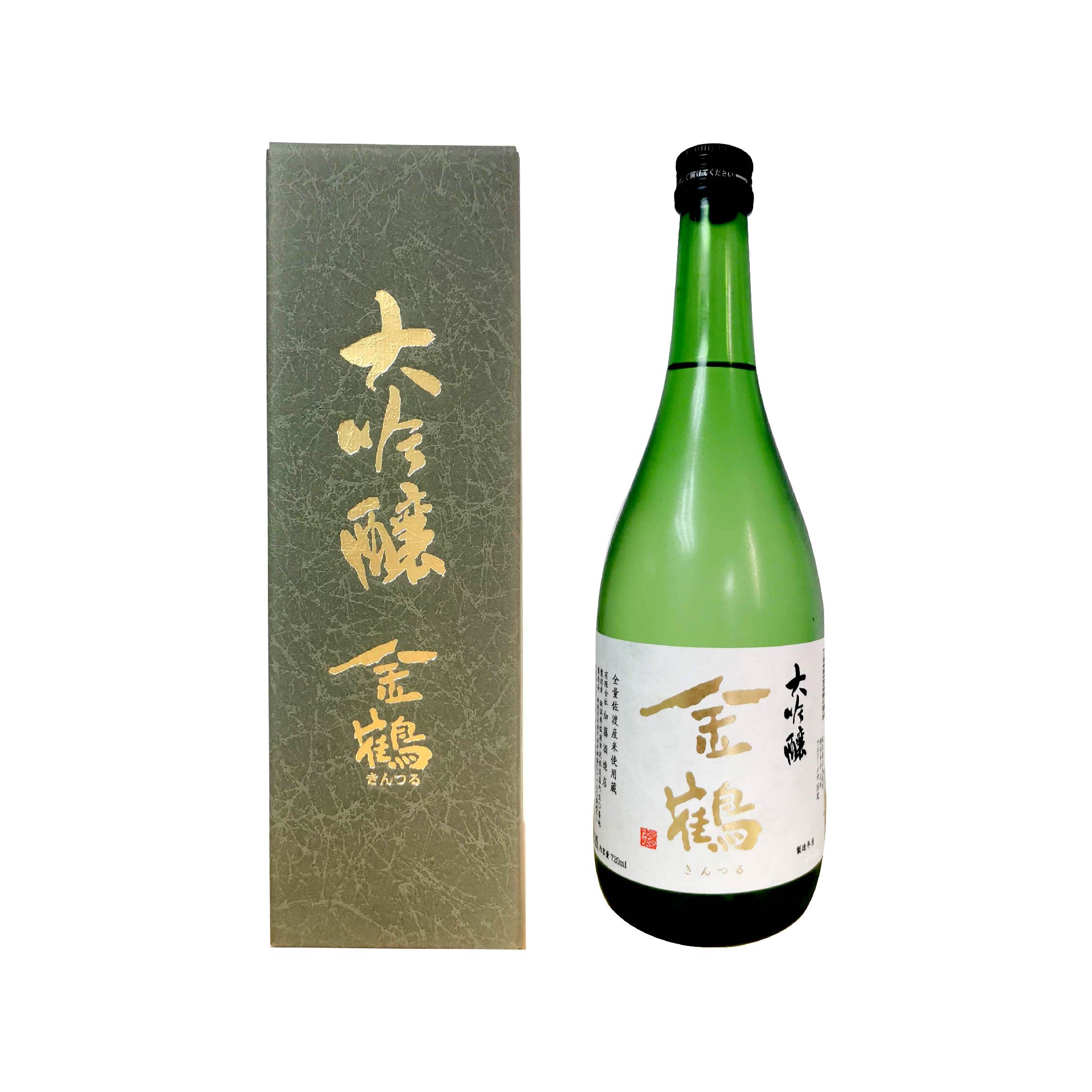加藤酒造
KATO SHUZO
Located on the picturesque Sato Island in Japan, Kato Shuzoten stands as a beacon of pride for its exclusive use of locally grown Sado Island rice in crafting their exceptional sake. A mere hour's ferry ride transports you to this oasis of exquisite flavors and aromas. The sakes produced by Kato Shuzoten boast a delightful fusion of clear, crisp flavors and fresh, fruity aromas that never fail to captivate the senses.
In the realm of recognition, Kato Shuzoten's Kintsuru Daiginjo has truly excelled, winning the prestigious Champion title at the Oriental Sake Awards in both 2022 and 2023. This exceptional achievement distinguishes Kintsuru Daiginjo as the only sake to achieve such a remarkable double victory. With each sip of their award-winning creations, one embarks on a journey through the rich tapestry of Japanese sake-making tradition, curated with passion and dedication by the artisans at Kato Shuzoten.
Kato Shuzoten on Sado Island, Japan, uses locally grown rice to produce sake with clear, crisp flavors and fresh, fruity aromas. Their Kintsuru Daiginjo sake won Champion awards at the Oriental Sake Awards in 2022 and 2023, making it the only sake to achieve this feat.
「金鶴」是加藤酒造店的主力產品。「金鶴」來自於佐渡島的金礦(佐渡金山)和鶴子銀山(鶴子銀山)。 標籤的設計師是來佐渡島的書法家:土屋東。
這瓶大吟釀充滿吟釀香和果香,口感細膩,“回味”清爽。
越淡麗
由五百萬石與山田錦交配培育得來,特徵是擁有「五百萬石」的清爽口感與「山田錦」的芳香甘醇,「越淡麗」的心白大而明亮,適合釀造大吟釀。金鶴 大吟醸
Kintsuru Daiginjo
In the realm of recognition, Kato Shuzoten's Kintsuru Daiginjo has truly excelled, winning the prestigious Champion title at the Oriental Sake Awards in both 2022 and 2023. This exceptional achievement distinguishes Kintsuru Daiginjo as the only sake to achieve such a remarkable double victory. With each sip of their award-winning creations, one embarks on a journey through the rich tapestry of Japanese sake-making tradition, curated with passion and dedication by the artisans at Kato Shuzoten.
Kato Shuzoten on Sado Island, Japan, uses locally grown rice to produce sake with clear, crisp flavors and fresh, fruity aromas. Their Kintsuru Daiginjo sake won Champion awards at the Oriental Sake Awards in 2022 and 2023, making it the only sake to achieve this feat.
Rice Polishing Ratio 精米歩合 40%
Alcohol Content 酒精度 15.6%
Sake Ratio 日本酒度 +1.1
Acidity 酸度 1.2
Amino Acid 胺基酸 0.8
Yeast 使用酵母 "Hiroshima Ginjo yeast
広島吟醸酵母"
原料米:越淡麗 (こしたんれい)
Sake Rice: Koshitanrei
「上弦の月」在日語是指月亮的型態。上弦の月是加藤酒造的“premium”系列。酒標的設計師是伊藤信太郎;他採用了簡潔和優雅的風格去模仿月亮的紋理。在酒標(貼紙)的背後,透過酒瓶可以看到「上弦の月」這4個字。上弦の月 純米大吟醸
JOGEN NO TSUKI Junmai-Daiginjo
酒藏採用了“自然栽培”的越淡麗酒迷去釀造這款酒體濃郁和充滿華麗果香的清酒。這瓶酒是在每年的3月份入瓶,然後仔經過5個月的低溫熟成才發售。
“Jogen no Tsuki” means waxing moon in Japanese. It is a high-end brand in Kato Shuzoten, sold only in Autumn.
The packaging is designed by Shintaro Ito in Sado Island—focusing on the themes of simplicity and elegance. The label mimics the texture of the moon crater. The characters of 上弦の月 can be seen through the bottle (behind the sticker).
The sake is brewed using pesticide-free and absolutely no fertiliser (including organic fertiliser) sake rice—越淡麗. It is extremely difficult to cultivate this type of rice; and its harvest amount is quite small
This sake is bottled in March of every year and will be stored and “matured” at -5C for 5 months.
Rice Polishing Ratio 精米歩合 50%
Alcohol Content 酒精度 16.1%
Sake Ratio 日本酒度 -2.3
Acidity 酸度 1.6
Amino Acid 胺基酸 1.1
Yeast 使用酵母 Kyokai 1901 協會1901
"原料米 越淡麗(自然栽培)
Sake Rice: Koshitanrei (NO Pesticide)"
拓 純米酒
HIRAKU Junmaishu
“拓”代表一種只在佐渡島生活的小鳥:“朱鷺”。在日語,拓意味著發展的慾望—在佐渡島的農夫們都很努力去種和生產最好的米。
酒的包裝紙是當地的農夫佐々木先生的種米報告。他記載著種米的過程。當冬天的氣候比較寒冷和不適宜種米的時候,佐々木先生就在酒藏擔任蔵人的工作。
酒的味道在常溫和下去的是會是最佳:味道和口感清爽。
Hiraku “拓” is a symbol of Toki, the bird found living only in Sado Island. The word Hiraku means development and open-mindedness in Japanese. It is named with a farmer’s wish:—albeit cultivating rice can be difficult, but they strive to produce the best products.
The wrapping paper of the sake packaging is a report from a local farmer, Sasaki San. He introduces how the rice is grown without using any pesticide and chemical fertiliser. Sasaki San is also the brewery’s “kurabito” (蔵人) in Winter.
The taste of the sake is great when served and enjoyed at room temperature. Flavours are light and clean.
Rice Polishing Ratio 精米歩合 60%
Alcohol Content 酒精度 15.8%
Sake Ratio 日本酒度 +5.6
Acidity 酸度 1.4
Amino Acid 胺基酸 1.0
Yeast 使用酵母 Jyokai 701 協會701
"原料米:たかね錦(無農薬栽培)
Sake Rice: Takaneshiki (NO Pesticide)"
純米 風和
Junmai KAZE YAWARAKA
This is Kato Shuzoten’s classic Junmaishu.
The sake has a clean acidic taste, and relatively full body. With a 60% polishing ratio, a slight ginjo flavor can be tasted too!
Around 20 years ago, Taiboku Inaba San visited Kato House with his work as a gift. The gift was a calligraphy of “風和” quoted from an old Japanese poetry ("万葉集" ). Kato Shuzoten was very impressed by his work and since then, this calligraphy became the label design of this collection.
Interestingly, the current Japanese Era “Reiwa”(令和)is also quoted from the same poetry (万葉集)。
這款純米酒的酸度比較高,擁有豐滿的酒體。雖然精米歩合不太低(60%),但和下去也可以感受到微微的吟釀香。
20年前,有一位書法家拜訪加藤家時贈送的見面禮。因為藏主非常喜歡這個詞所以把它作酒標。“風和”這個詞是從一篇“万葉集”的古詩引用的;同樣地,當今的日本年號“令和”也是從這首詩引用出來的。
Rice Polishing Ratio 精米歩合 60%
Alcohol Content 酒精度 15.5%
Sake Ratio 日本酒度 +1.4
Acidity 酸度 1.6
Amino Acid 胺基酸 1.2
Yeast 使用酵母 Kyokai 1501 協會1501
"原料米:五百万石(ごひゃくまんごく)
Sake Rice: Gohyamangoku"






